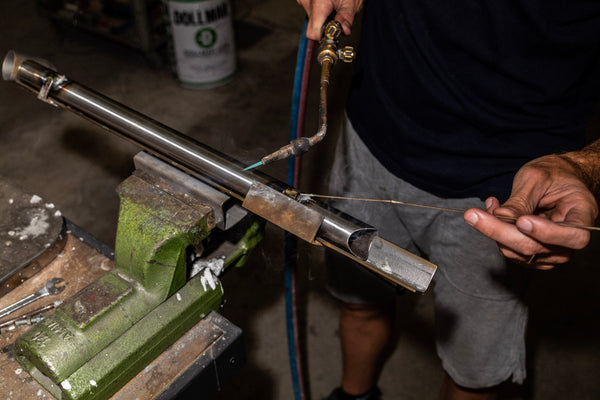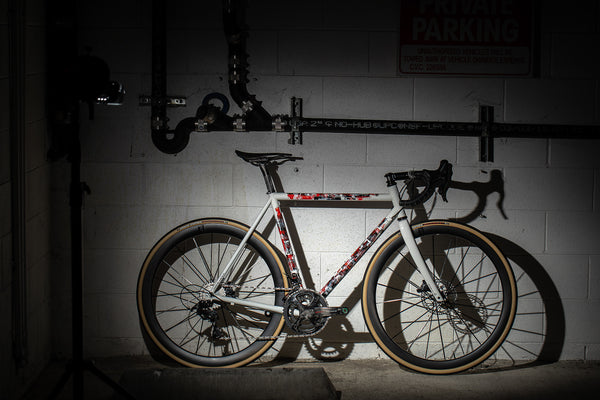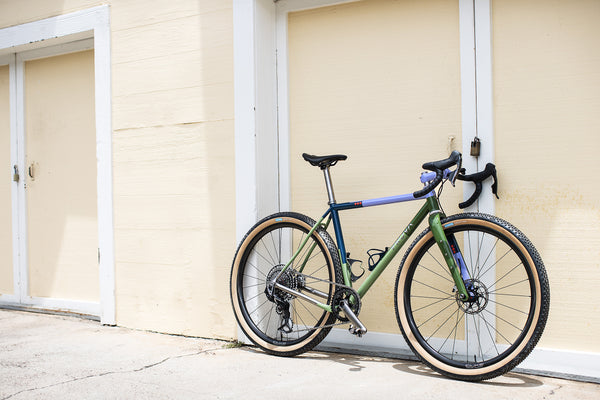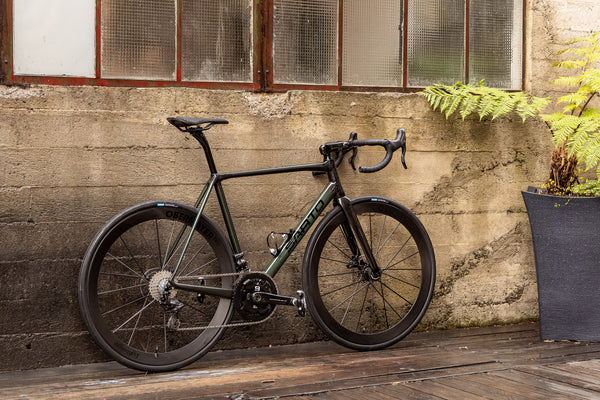“How’s the heart?”, everyone asks.
Frankly, it’s normal. I haven’t experienced any additional episodes of arrhythmia since the initial wallop, and have adopted a “wait and see” kind of attitude. I also took a nice, mellow break, and cancelled any sort of goals in July/August. The downside? I gained weight. Like almost every bike rider ever, I have a terrible knack for “Absolutely Nothing in Moderation”. Feast or famine. After my heart tried to kill me, there was indeed some goal shifting…and it was overly ambitious. I had designs on competing in a punishingly difficult stage race in Colombia in late September. But, I’m also a realist, and have never been a fan of showing up to competition without designs on success. After gaining a solid three or four kilograms (for the Imperialists, 7-9lbs) in the space of about a month (note: Shockingly easy), it wasn’t going to happen. It’s always far easier to gain weight safely than lose it safely, and a ProTour-level stage race is a no-go toting around a spare 10kg. I solved the problem by committing myself to skids on gravel and fall gran fondos.
Enter the oracle of performance information and our guide in the Skinny on Power, Craig Upton. He’s coached athletes to Olympic and World Championship gold, I figured that he’d have a good solution for serious weight loss beyond just “ride more”. It’s not been something we’ve tackled yet. The elephant in the room in most coach/athlete relationships – that so much performance comes out of the kitchen instead of just the road. Most cyclists would rather add 50 watts than drop 50 pounds. First step? A Dexascan, specifically, the most accurate calculator for bodyfat percentages available – period. It blows the Bodpod, caliper skinfold, and your at-home Tanita scale out of the water. Originally developed for measuring bone density in osteoporosis patients, now vain cyclists and their ilk can take advantage of the tech that uses low-dose x-rays to take a pinpoint-accurate picture of what a human body is made of. We took an early morning trip to DexaFit in downtown San Francisco to figure out just how marbled I was.
The answer, illustrated above: A whopping 17.8% fat. 32.4lbs worth! That’s two extra Baum Corretos with water bottles. Needless to say, the Dexascan is really, really cool. It does tend to measure a bit higher than a “standard” bodyfat test as it subtracts bonemass from tissue, driving up ratios a bit (for example, my Tanita scale at home clocks my bodyfat around 9%).
Other nuggets:
-Like many bike riders, I have the arms of a small child. 18lbs of total mass.
-My legs, on the other hand, weigh more than a large child. 67lbs. Throw my ass in (gynoid), and we’re up to almost 100lbs of combined mass. Badonk.
-My total lean mass (143.6lbs) is very close to the lightest I’ve ever been in 2012, at 24 years old. Translation? I’ve likely added quite a bit of muscle since then, driving up power output (true).
-I tend to be very biased towards my ride side as far as total mass. My right arm is .3lbs heavier than my left (so many jokes about bike riders), and my right leg is almost a pound heavier. Maybe my goofy-footed snowboarding past is rearing its ugly head?
I took the results to Craig for a prescription, as well as some thoughts on weight loss. As I mentioned, I was my leanest/lightest in 2012, at about 146lbs – but it came at a huge cost. I lost a large amount of weight over the winter previous, hell-bent on having as high a power-to-weight ratio as possible. But, my rapid weight loss (15-20lbs) over about a month and a half, coupled with relative inexperience training (it was my second winter – ever – training) led to my absolute destruction by the April of the next season. I kissed my first “pro” year goodbye in my second race. It was miserable. Anemic with the hormones of a 90 year-old woman, I became a shell of a human, and it took the better part of two years to fully recover from. Needless to say, I’ve always been apprehensive about losing “too much” weight, or doing it the wrong way, so I asked Craig some pointed questions about what we were doing.
AC: By our calculations, 155-160lbs seems like an ideal place to be. Is this a realistic goal?
CU: Currently, you’re 182lbs and 17.8% body fat, so around 32.5lbs of fat. Which gives us 143.5lbs of lean body. I think a nice goal to start with, perhaps not the ultimate goal, but to start so it helps motivation is to try and get you below 12%. This would make you more like 165lbs. I think this is very doable, a great goal. If that feels good, we then try and dabble with the single digits if you can handle sticking to a diet, or how well the diet merges into and becomes part of your life.
AC: With focus, is it maintainable once/if I hit it with 10-20 hours a week of riding?
CU: This is absolutely maintainable. You would have to keep good nutrition practices and hopefully much of what we do becomes lifestyle. Then this is very maintainable.
AC: One of the things we’ve experienced in the past with weight loss is losing power as well. Is that a possibility moving forward?
CU: We expect zero power loss, though it’s possible that some days it will be a struggle to hit the power if you are very low on calories. But, typically no power loss long-term and once we are at maintenance, definitely no loss.
AC: How rapidly is the kind of weight loss we’re talking about attainable without negative effects on fitness/power?
CU: We will be targeting one pound per week. This is very sustainable, and that way you can continue good training. If we lose too fast, much faster than this, you begin to shed muscle (as experienced when you’ve lost weight in the past). It is doable, but power will go down.
AC: We know the answer, but is “cheating” or a “cheat day” allowed?
CU: You can have a cheat day if you need it. Of course, with a cheat day, weight loss slows down. If you really want to lose the weight, you should try and remain as focused as possible. Besides, we don’t want to so much nix any foods, we just want to make sure you are eating the correct totals. So you can still eat your yummy things, but you might have to miss out on something else that same day.
AC: Any mental tips for a training cyclist on how to stick to a diet plan?
CU: One of the biggest things is eating while training. This is a MUST. NEVER EVER diet on the bike. If you do, it is a huge struggle. You do crap training, come home bonked, and then empty the refrigerator. We want you coming home feeling good, so you can eat a normal sized lunch after your recovery shake. Also, I always find that if you can see the progress it becomes really motivating. You may see on the scale, or in your legs or in your six-pack. But if you can see it, then the motivation is super high. It’s really worth looking for things like that.
The prescription? It’s fairly simple, shoving all of the carbohydrate intake for the day into the window immediately before, during, and right after riding – which is typically in the morning. Heavy carb intake right before riding for breakfast (along with 20-30g of protein), and during riding. So much more during riding than I’m used to – about 60g per hour (aka, 240 calories of just carbs). The key is to keep from getting home starving to prevent fridge-emptying. A recovery shake with carbs/protein, followed up with a veggie/protein heavy lunch a bit after. Snacks are things like fruit, cottage cheese, and greek yogurt. Dinner? A fistful of meat and salad. I use a Park Tool gram scale to measure out my food (sidenote: Also great for baking), it’s easier than screwing around with measuring cups.
This is what Day 1 looked like. By my calculations, I should be at 165lbs by…Christmas. Just in time for cookies. And pie.
Great.












Back to Journal